The Marvelous Majorovs, part 2
 January 13, 2012
By Eva Maria Jangbro (EMJO)
Photos © Eva Maria Jangbro
(EMJO),
Absolute Skating is proud to present the next part of the series of interviews with the members of the Majorov family. Since the early 1990s they have graced Sweden with their incredible talent involving most aspects of figure skating. Alexander Sasha Majorov, who was featured in part 1, recently became the new Swedish Champion. He owes a lot of his success to his mother, Irina. Lets turn the spotlight on her:
Ice and fire with Irina
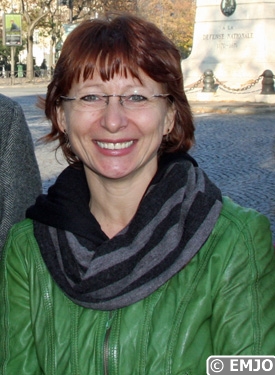 “A few years back Absolute Skating publishedan interview with Alexander Majorov senior. Now it is his wife Irina’s turn to enter the hot seat. The first time I met Irina was on the bus leaving the Swedish Nationals in Karlskrona, back in 2005. Words immediately started to flow in her signature, very rapid Swedish with a Russian touch. Irina Majorova is one creative lady; always willing to share all about the latest Majorov projects, be it making a wig from scratch to be used in the Luleå club show, or the choreography she makes for her students. Figure skating is often turned into a family business in Sweden since the sport lacks the support of major sponsors, and skating is expensive. Irina is a graduate of the Russian Ballet School, a choreographer and dance teacher. At one time she was the choreographer at the School of Olympic Reserve in St. Petersburg. Now she runs a dance and ballet school in Luleå in Northern Sweden, and is in charge of the floor and dance training at the Luleå skating club.”
“A few years back Absolute Skating publishedan interview with Alexander Majorov senior. Now it is his wife Irina’s turn to enter the hot seat. The first time I met Irina was on the bus leaving the Swedish Nationals in Karlskrona, back in 2005. Words immediately started to flow in her signature, very rapid Swedish with a Russian touch. Irina Majorova is one creative lady; always willing to share all about the latest Majorov projects, be it making a wig from scratch to be used in the Luleå club show, or the choreography she makes for her students. Figure skating is often turned into a family business in Sweden since the sport lacks the support of major sponsors, and skating is expensive. Irina is a graduate of the Russian Ballet School, a choreographer and dance teacher. At one time she was the choreographer at the School of Olympic Reserve in St. Petersburg. Now she runs a dance and ballet school in Luleå in Northern Sweden, and is in charge of the floor and dance training at the Luleå skating club.”
The choreography of programs is a widely discussed subject, not to mention the music choices. How does this process work for you?
“It is team work. Finding something that suits the rhythm and the skater is a most difficult thing to do. The music has to have the right rhythm for spins, jumps, steps, and also that the skater will be able to understand the music.”
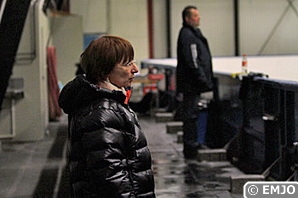
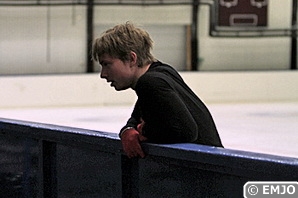
When you talk about rhythm, which one do you mean?
 “I mean the rhythm of the music, slow or fast, but also the rhythm of the skater. The natural body rhythm so to say, that rhythm that helps you perform your best; that is very important. Like the music for Sasha’s free program. We had chosen Bolero already for last season, but Alexander was not ready for it then, his capacity was a little lower than this year. We went back to the idea this year.”
“I mean the rhythm of the music, slow or fast, but also the rhythm of the skater. The natural body rhythm so to say, that rhythm that helps you perform your best; that is very important. Like the music for Sasha’s free program. We had chosen Bolero already for last season, but Alexander was not ready for it then, his capacity was a little lower than this year. We went back to the idea this year.”
You have an understanding for things the audience doesn’t really notice or even think about. I assume it has to do with your dance background and education.
“I started out aiming for a dance career, but things happened and I began to study dance instruction instead. The inspiration to become a dance teacher came from my instructor. I studied at the University of Leningrad during four exciting years (1980 to 1984). I am grateful to all who worked with me, I love my profession. From 1984 to 1987 I ran a ballet studio in Leningrad. It's fun to see the students' development. In 1986 I also had the chance to work with figure skating on a trial bases. That was fun, magic! And on the ice I met my husband. I changed my life, now there’s ice and fire!”
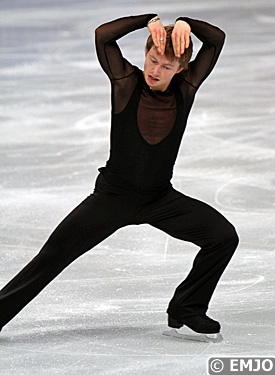 In Sasha’s free program Bolero there is both ice and fire. Why did you choose this particular version?
In Sasha’s free program Bolero there is both ice and fire. Why did you choose this particular version?
“There are different orchestras playing Bolero, but we chose a Flamenco style version (Gustavo Montesano). It differs from the classical Bolero version that so many skate to, which is also good, but we wanted one with more character and variation. We wanted to have not only the Bolero that builds up with the instruments, but one a little livelier, a more theatrical version.”
The French composer Maurice Ravel wrote Bolero back in 1928, and you have chosen the choreography made by Béjart in the early 1960s.
(Maurice Béjart, 1927 – 2007, is known for his modern ballet choreography. He was born in Marseilles, but trained at the Paris Opera Ballet School. He later moved to Lausanne, Switzerland, where he founded the world famous Béjart Ballet Lausanne - ed)
“Béjartwas a very modern chorographer and I was inspired both by him and the dancers, specially the male dancer and their moves.You express yourself through the dance and for a moment you own the world.”
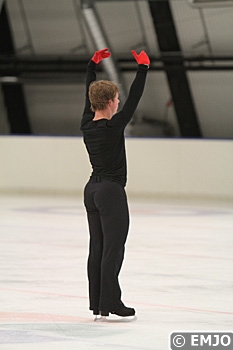

How do you transfer/transform a choreography made for ballet and the floor to the ice and figure skating?
“We looked at the whole choreography, how the dance and the feeling were built up by Bejart. We really liked the atmosphere that is created by the dance and the choreography, but we wanted to do something different, since you can’t take everything in ballet and copy it to the ice. When I think of choreography for figure skating, I know many people don’t like ballet, they think it is boring. I think it is exciting, I love it and the way the dancers use their bodies; to me it is beautiful. I want to present that beauty to figure skating fans. I want the art of dance and ballet to come to the big figure skating arenas. Young people in general only know new music. But music does not always have to be boom boom. They overlook classical music, they don’t know it. I work a lot with children and I think we have to help them see what music and dance can give them. It is important because not everything is about money. Perhaps I am crazy to think that the beauty in music and dance can save the world and make us better, more beautiful people. But that is my foundation as a dancer.”
What kind of music do you think suits Sasha the best?
“I think he can do everything now. He can change and transform during the 6 minutes warm-up in a competition. I am not saying that as a mom but as a coach.”
 Is it too early to think about music for next season?
Is it too early to think about music for next season?
“No, we have to change the short program for sure. The free we will see. I think right now he is getting more and more into his free program and that takes time. Every program needs time. A couple of months ago we thought about changing the free as well for next season, but now I don´t think so anymore. There were some criticism of the free program at first, it was this and that. We are aware Bolero has been used before by Plushenko and Lysacek in singles, among others, and of course by Torvill/Dean in ice dance (Jayne Torvill and Christopher Dean are the 1984 Olympic gold medalists, 4 time World champions and 4 time European champions from Britain - ed). They surprised everyone by using a ballet in figure skating. Anyway, we try to do it differently, and not like everyone else according to the “rules” or “routines”. It’s like it has to be a certain way, otherwise it is “bad”. We tried to find a style for Sasha; his style and do the piece our own way, we don’t want to be like the others. Will we succeed or not? Who knows, time will tell, but it was actually good that they (judges, skating people) picked on our program and said it was bad, bad, bad. That means they have really looked at it, it didn’t pass unnoticed. The amount of criticism means it was interesting .”
 So you turned the criticism into a challenge to make something good out of?
So you turned the criticism into a challenge to make something good out of?
“At first I was really sad by what was said. But then I thought, why do they even talk about it if it is so bad! We made some changes anyway. One of the judges in Dortmund remembered the program from the beginning of the season, and said it is much better now. That was very good to hear. In Paris, some people in the audience even said bravo, bravo! I was thrilled they recognized the Béjart influence. When we watched the performance on youtube, we heard the Spanish commentator mentioning Béjart, so she recognized it too and knew what we were trying to do. That made my day. Life is about developing and evolving and that goes for Sasha too.
We were happy about Sasha’s Bolero at the Swedish Nationals. He makes small steps of progress each time he performs it, not all at once but he is on the way up. There were problems with the skates but they (Alexander senior and junior) put some screws in the heel of the boot, and Sasha skated on one new and one old skate. I tried to break in another pair and make them soft, but it didn’t work.”
So Sasha won his Swedish Champion title on the two different skates. His younger brother Nikolaj got bronze at his first Nationals. Gold and bronze to the two skating Majorov brothers, no wonder the photographers were delighted to catch the whole family in the kiss n’ cry after Sasha’svictory.
The Majorovsthen hurried back to Luleå to prepare for the Christmas show, held on December 23rd. Sasha had choreographed his own show number. Is he following in his mother’s footsteps? You be the judge!
Thanks Irina for the chat and keep up the good works! I can’t wait to see you again for another Majorov update.




